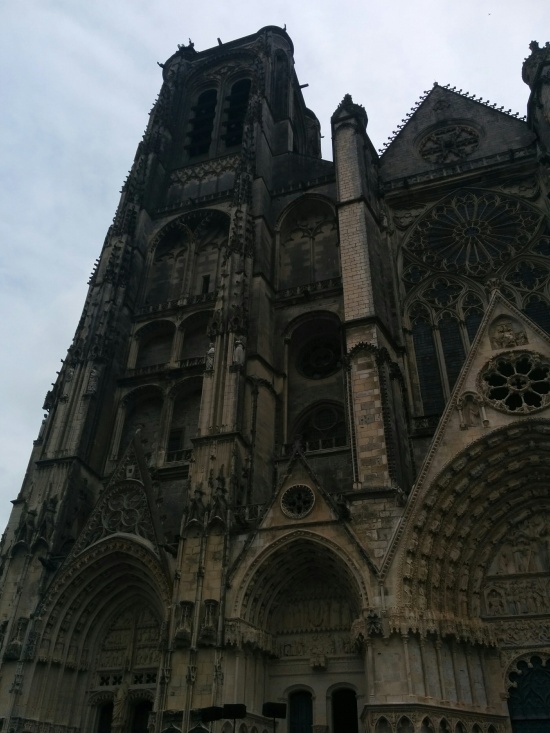An Ongoing Attempt to Define the ‘Gothic’
In terms of the arts (particularly literature, but also film and music, as well as static visual art – you know, ‘art proper’), the gothic is commonly considered a trope, rather than a genre.
A genre is a broad classification based on qualifiers such as subject matter, style, or historical period. A trope, however, can be a subcategory of any genre (although some tropes will be more prevalent within certain genres) which will include a number of particular motifs, themes, and recurring metaphors.
Over a series of posts, I will look at the various elements of the gothic trope, which I hope will enable you to better understand and identify the gothic in the real world (of art, and beyond).

© Generally Gothic
Gothic Tribes and Warriors
Centuries before Edgar Allan Poe wrote ‘The Raven’ (1845) by candlelight, the term ‘Goth’ was used to describe a tribe of European people. It is commonly accepted that they were of Germanic decent, although the exact origin of the Goths is unknown. Specific details of their history are disputed due to unreliable, conflicting, and lost accounts from authors contemporary to the Goths.
First appearing in an account by Roman author Pliny the Elder (23 AD – 79 AD)in 75 AD, the Goths exist across centuries of historical records. In the fifth century, the tribe played an active part in ending the reign of the Roman Empire, which finally collapsed in 476 AD. Gothic tribesmen were renowned for dethroning the sovereignty of their rivals, as well as their own. This trend came to be known as the ‘Gothic Disease’. I am yet to discover what, if anything, Gothic tribeswomen were renowned for.
 Probably replica weaponry and armor, Hampton Court Palace, Herefordshire – NOT London, UK | © Generally Gothic
Probably replica weaponry and armor, Hampton Court Palace, Herefordshire – NOT London, UK | © Generally Gothic
The tribe moved around Europe, though at some point they divided, travelling to opposite sides of the continent. These two separate groups were first distinguished in text by writer and administrator to Gothic King Theoderic the Great (454 AD – 526 AD), Cassiodorus (485 AD – 585 AD) in 519 AD. Named for their geographical locations, the Goths occupying the east were referred to as the ‘Ostrogoths’. ‘Tervingi’ or ‘Theruingi’ were the west-occupying Goths. The latter sub-tribe are more commonly referred to by their Latin name, ‘Visigoth’, which translates to ‘forest people’.
Castles and Forests
In the late Middle Ages, these forest people and their eastern neighbours converted from Paganism to Christianity and had a great influence upon the architecture of the time (more of this in future posts!). The Goths are therefore associated with strikingly ornate and looming, artificial structures, as well as seemingly contradictory wild, uncultivated, expansive landscapes. Together, these two settings combine to become (here we go!) a single element – an unsettled narrative backdrop – of Gothic fiction.
 Bourges Cathedral, Centre-Val de Loire, France | © Generally Gothic
Bourges Cathedral, Centre-Val de Loire, France | © Generally Gothic
Clive Bloom acknowledges this union, stating:
“The Gothic mood took as its first vocabulary that of architecture on the one hand and of the wild on the other”
– Clive Bloom, Gothic Histories: The Taste for Terror, 1764 to the Present (London: Continuum International Publishing Group, 2010), p4.
This pairing is most clearly exemplified in Ann Radcliffe’s (1764 – 1823) early gothic novels The Mysteries of Udolpho (1794) and The Romance of the Forest (1791). In both texts, the female heroines are removed from the safety of their own homes and become entrapped in grand yet ruinous foreign castles, surrounded by natural landscapes that are equally perilous.
“Gothic locations are typically historically and geographically distant, and are also wild (mountains and forests) or dark enclosed spaces (dungeons).”
– Duffy and Howell (eds) Cultures of the Sublime: Selected Readings, 1750 – 1830 (London: Palgrave, 2011), p121.
Whilst opposites of sorts, there is a parallel between the open, natural wild and enclosed, constructed architecture. These locations work to remove characters in extremes – one as far out, the other as far in as humans can find themselves on land.
Check back next week as Generally Gothic delves deeper into the symbols and metaphors of castles and forests in gothic fiction.
© Generally Gothic, 2017. Unauthorized use and/or duplication of this material without express and written permission from this site’s author and/or owner is strictly prohibited. Excerpts and links may be used, provided that full and clear credit is given to Generally Gothic with appropriate and specific direction to the original content.
Cite This Work
APA Style
Emadian, H. S. (2017, July 02). The Gothic: What?. Generally Gothic. Retrieved from https://generallygothic.wordpress.com/2017/07/02/the-gothic-what/
Chicago Style
Emadian, H. S. “The Gothic: What?” Generally Gothic. Last modified July 03, 2017. https://generallygothic.wordpress.com/2017/07/02/the-gothic-what/.
MLA Style
Emadian, H. S. “The Gothic: What?” Generally Gothic. Generally Gothic, 03 Jul 2017. Web. [Date Accessed].
